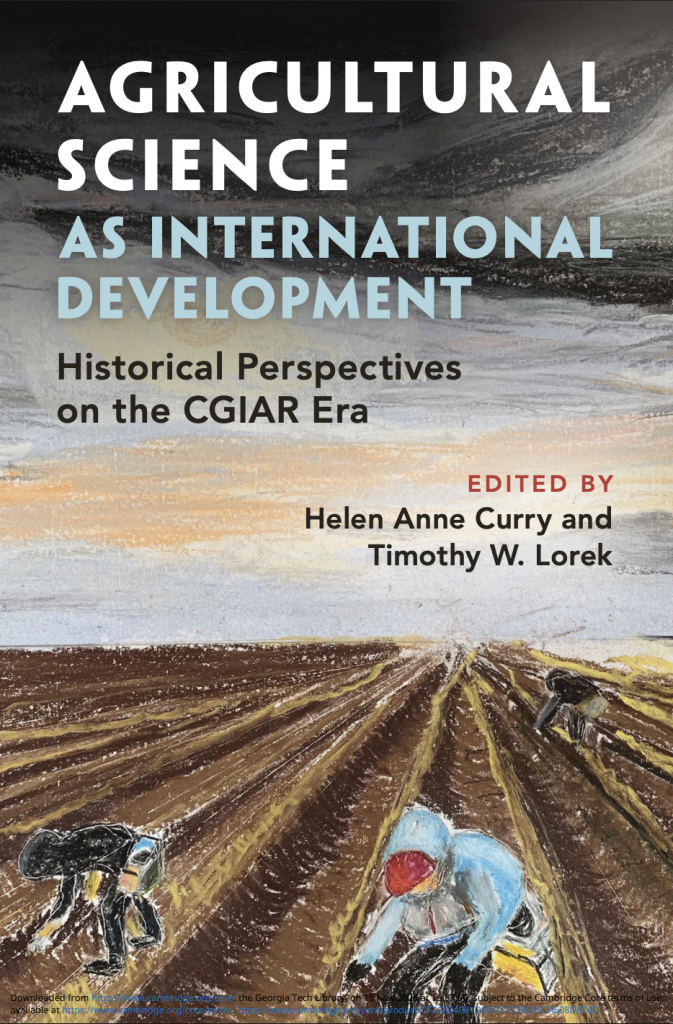There are different ways in which research organizations gain power, and this is just one of them,” said Helen Anne Curry, the Melvin Kranzberg Professor in History and Technology. “It happens to be a very important one in our world today.”
 Curry studies how science and technology have shaped agriculture practices and output throughout history. In an open-access book of essays she co-edited with Timothy W. Lorek at the College of Saint Scholastica, Curry and her collaborators explore how an organization called the CGIAR consolidated significant power and authority in agricultural development.
Curry studies how science and technology have shaped agriculture practices and output throughout history. In an open-access book of essays she co-edited with Timothy W. Lorek at the College of Saint Scholastica, Curry and her collaborators explore how an organization called the CGIAR consolidated significant power and authority in agricultural development.
Curry’s book, Agricultural Science as International Development, charts the rise and relevance of the Consultative Group on International Agricultural Research (CGIAR), an influential global coalition of agricultural research centers formed in the 1970s.
In a chapter with co-author Sabina Leonelli, Curry examines how the CGIAR standardized crop descriptors across languages, countries, cultures, and varied agricultural needs. These standardized data points are similar to using Latin names in science, allowing researchers from different backgrounds to categorize and study crops with the same terminology.
The Role of CGIAR in Agricultural Research
While a study of data conventions in agriculture might seem relevant to only a few, Curry says the chapter speaks to broader challenges in understanding how seemingly-simple data practices can have lasting consequences in today’s data-driven world.
“One of the mechanisms through which CGIAR became so influential was by setting standards for certain kinds of agricultural data,” Curry said. “Things that seem as mundane as the labels you use in a database can shape how power is distributed.”
Through these descriptor lists, the CGIAR influenced which data was and wasn’t collected by researchers around the world, at times sidelining traits that were important to researchers in some areas but not others. And if organizations did not want to use the descriptor lists, they risked exclusion from the larger research community. By 1997, 80 percent of seed and gene bank curators relied on the standardized descriptions, the researchers note, helping the CGIAR cement it’s “central position in a larger web of international agricultural research initiatives.”
Today, the crop descriptors remain a foundational tool for agricultural research and policy, and the CGIAR is “becoming ever more influential within digitalized, data-intensive, and increasingly automated approaches to biology and breeding,” Curry and Leonelli write.
“So, it matters what labels are used and who gets to determine those labels,” Curry said. “Because that shapes the data, and what we know, and how knowledge moves around the world.”
Redistributing Authority
 It’s no secret that the world is growing ever more data-driven. MIT reports that the number of companies with a chief data officer grew from 12% in 2012 to 85% in 2025.
It’s no secret that the world is growing ever more data-driven. MIT reports that the number of companies with a chief data officer grew from 12% in 2012 to 85% in 2025.
Reflecting on the relevance of her research contribution to the book, Curry says it’s about considering the institutions more broadly that govern data and being sure that we’re confident in their politics and their policies.
“We tend to think of things like data curation as a boring or basic task, but actually, if we’re not paying attention to how the labels get made and who gets to decide, then we might be missing subtle redistributions of authority within the space,” she said.
“As we can see with the CGIAR, these behind-the-scenes decisions persist over time, and they empower some kinds of research and not others. So, the politics of data management and the technical practices we might be inclined not to question or find interesting can be significant.”
Explore more featured research in the School of History and Sociology!
